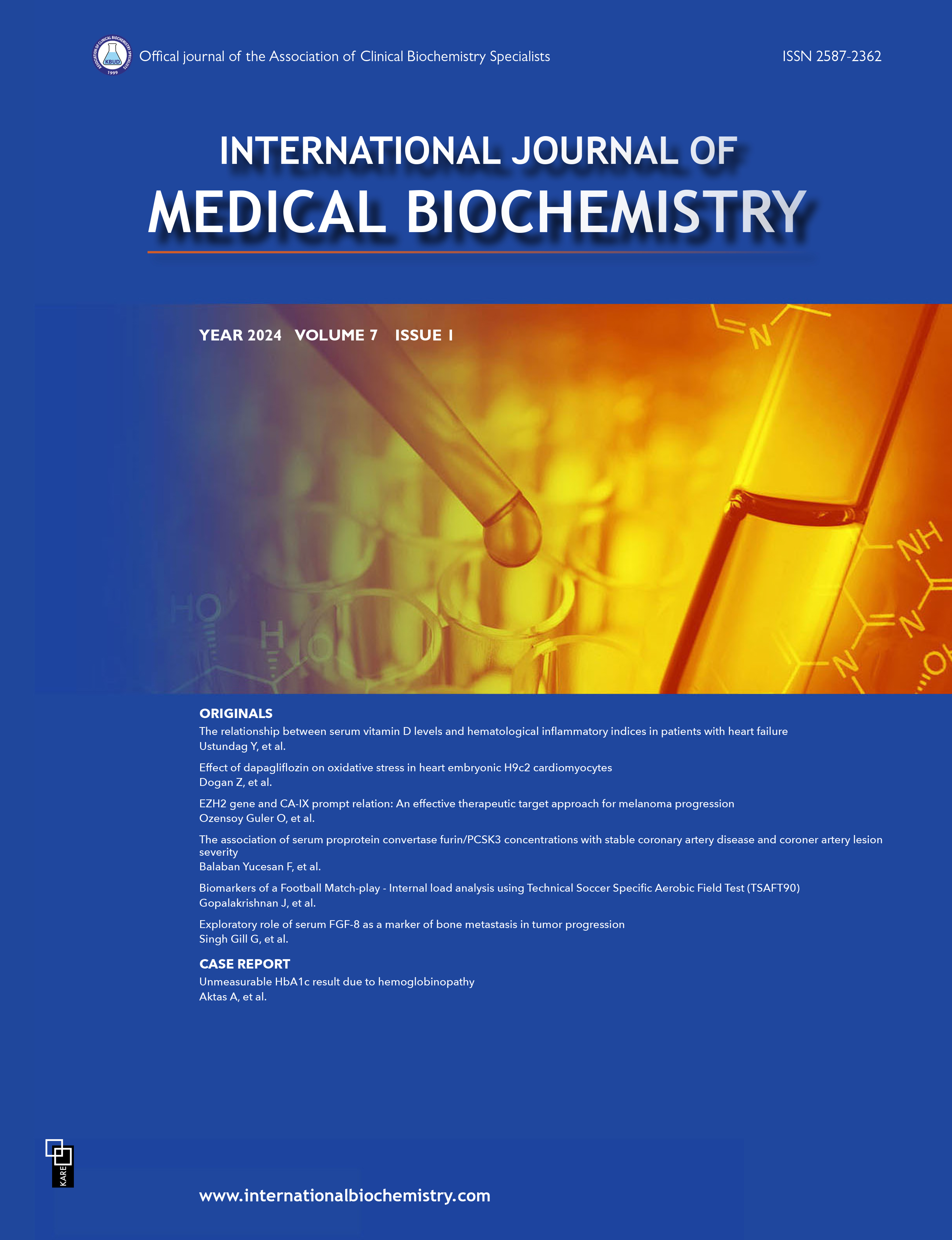Relationship between C-reactive protein, systemic immune-inflammation index, and routine hemogram-related inflammatory markers in low-grade inflammation
Yasemin Ustundag1, Kagan Huysal1, Sanem Karadag Gecgel2, Dursun Unal31Sağlık Bilimleri Universitesi, Bursa Yüksek İhtisas Eğitim ve Araştırma Hastanesi, Klinik Biyokimya, Bursa, Türkiye.2Sağlık Bilimleri Universitesi, Bursa Yüksek İhtisas Eğitim ve Araştırma Hastanesi, Mikrobiyoloji, Bursa, Türkiye.
3Sağlık Bilimleri Universitesi, Bursa Yüksek İhtisas Eğitim ve Araştırma Hastanesi, Urology, Bursa, Türkiye.
INTRODUCTION: The term low-grade inflammation is usually used to indicate chronic conditions in which the findings of classic, clinical inflammation are lacking, but there is an elevated C-reactive protein (CRP) level of 3 to 10 mg/L. Recently, the systemic immune-inflammation index (SII) was developed based on lymphocyte, neutrophil, and platelet counts, which can project the inflammatory and immune imbalances. The aim of this study was to examine the SII and new parameters derived from hemograms to determine if they have the potential to detect patients with subclinical low-grade inflammation in an unselected, elderly, outpatient population.
METHODS: The CRP level was analyzed with a BN II System nepholometer (Siemens Healthineers, Erlangen, Germany). Participants were stratified according to CRP level: Group 1 had a serum CRP result <3.0 mg/L and Group 2 had a serum CRP result 3.0-9.0 mg/L. Blood samples that had been analyzed with an automated hematology analyzer (Mindray BC-5800; Mindray Biomedical Electronics Co., Ltd., Shenzhen, China) were selected for evaluation of the results. The SII (neutrophil x platelet / lymphocyte), platelet-to-lymphocyte ratio (PLR), and neutrophil-to-lymphocyte ratio (NLR) were calculated.
RESULTS: The cumulative results of 179 unselected outpatients aged 45 years or older were evaluated. The SII (431 [interquartile range {IQR}: 326] vs 535 [IQR: 291]; p=0.049) and PLR (117 [IQR: 38] vs 126 [IQR: 58]; p=0.031) values were significantly high in Group 2 compared with Group 1. A statistically significant correlation between the SII and the NLR (r=0.807; p<0.001), PLR (r=0.773; p<0.001), and the platelet count (r=0.653; p<0.001) was found. However, there was no correlation between the CRP, SII (r=-0.312; p=0.210), and PLR (r=-0.165; p=0.117).
DISCUSSION AND CONCLUSION: A high PLR and SII appears to be associated with subclinical low-grade inflammation. These data do not support hematological screening parameters as a substitute for CRP. These findings are limited to the cohort studied here, and may not be entirely applicable to other ethnic origins.
Corresponding Author: Yasemin Ustundag, Türkiye
Manuscript Language: English



















